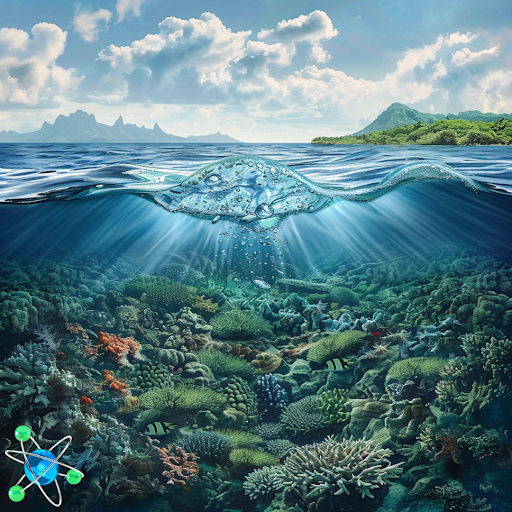
- The Department of Energy (DOE) and National Oceanic and Atmospheric Administration (NOAA) have signed an agreement to collaborate on removing carbon dioxide from the ocean, supporting the Biden Administration’s net-zero emissions goal by 2050.
- This partnership leverages NOAA’s ocean science expertise and the DOE’s energy technology, enhancing research, communication, and innovation in marine carbon dioxide removal.
- The agreement establishes coordination mechanisms, prioritizes research infrastructure, develops protocols for carbon removal, and encourages future collaborations to address climate change effectively.
Last week marked a significant milestone in the fight against climate change as the Department of Energy (DOE) and the National Oceanic and Atmospheric Administration (NOAA) inked a memorandum of agreement (MOA) to spearhead collaborative efforts aimed at removing carbon dioxide from the ocean. This joint initiative, poised to mitigate the impacts of climate change, aligns closely with the Biden Administration’s ambitious goal of achieving net-zero greenhouse gas emissions by 2050.
The MOA serves as a foundational framework for fostering collaboration between the DOE and NOAA, streamlining efforts to prevent any redundancy in research findings while enhancing communication channels for mutual benefit. It leverages the unique strengths of each entity, capitalizing on NOAA’s expertise in ocean science and the DOE’s robust proficiency in energy science and technology. This collaboration promises to advance scientific understanding and technological innovation in the realm of marine carbon dioxide removal, laying the groundwork for transformative solutions to combat climate change.
Outlined within the MOA are four key responsibilities aimed at driving progress and facilitating impactful outcomes. Firstly, it establishes mechanisms for coordination and collaboration between the two agencies, ensuring seamless integration of their respective initiatives. Secondly, it prioritizes the acceleration of research and development infrastructure, encompassing state-of-the-art facilities and robust data management systems to bolster scientific endeavors. Thirdly, it mandates the development of comprehensive protocols for marine carbon dioxide removal, underscoring the imperative to address ecological, economic, and societal implications. Finally, it paves the way for future collaborations, fostering a dynamic and enduring partnership between the DOE and NOAA.
Dr. Geri Richmond, DOE Under Secretary for Science and Innovation, underscored the transformative potential of carbon dioxide removal methods, emphasizing their capacity to mitigate and eliminate significant quantities of harmful emissions annually. This collaborative endeavor represents a pivotal step forward in the quest for viable solutions to climate change, offering renewed hope for a sustainable future.
The ocean, often underestimated in its role in climate dynamics, plays a key role in regulating global carbon cycles. As a natural carbon sink, it absorbs approximately one-third of human-emitted carbon dioxide from the atmosphere, underscoring its immense potential as a climate mitigation asset. Moreover, its capacity to sequester carbon dwarfs that of terrestrial ecosystems, accentuating the urgency of leveraging this resource effectively.
Scientists have long explored methods to enhance the ocean’s carbon sequestration capacity, offering promising avenues for climate intervention. By deploying innovative scientific techniques, researchers aim to augment the ocean’s carbon uptake capabilities, concurrently addressing pressing environmental challenges such as surface ocean acidification.
The implications of this agreement extend far beyond the realm of scientific inquiry, heralding a paradigm shift in the global fight against climate change. If successful, this collaborative endeavor has the potential to catalyze profound changes, fostering the resilience of ecosystems worldwide, offering a glimmer of hope for a more sustainable and harmonious future.

0 Comments